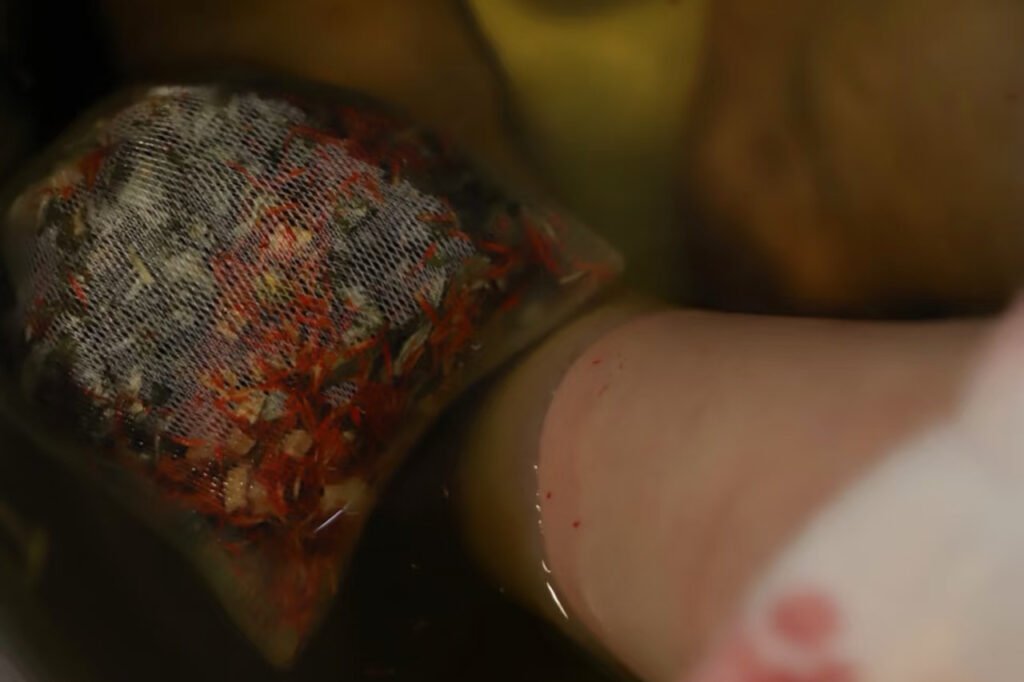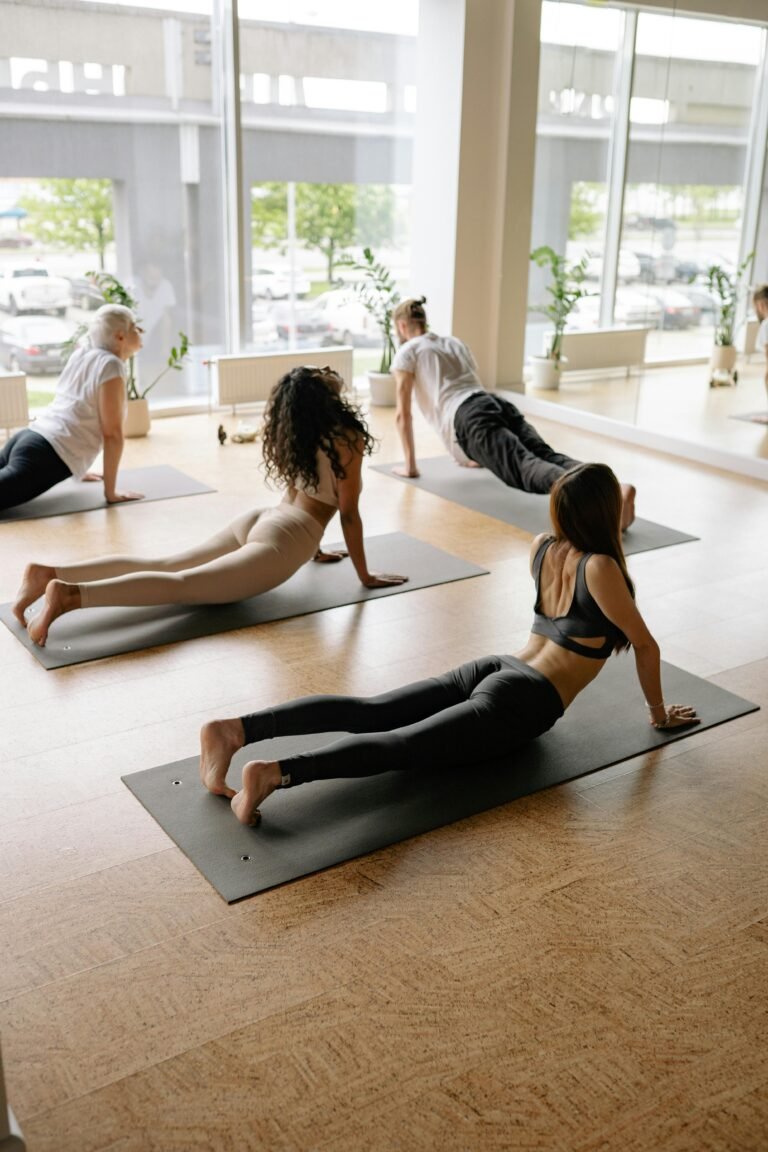In today’s fast-paced society, it is easy to feel fatigued all the time. We rush through our jobs, manage our responsibilities, and frequently curl up on the couch at the end of the day while scrolling through our phones. Even after hours have passed, a true sense of rest and regeneration remains elusive. Constant stimulation from electronic devices can disrupt our sleep habits, forcing us to toss and turn, trapped in a cycle of fatigue and restless nights. Our brains, deprived of proper rest, fight to recover, resulting in persistent fatigue.
It is time to reclaim your evenings and discover simple practices for relaxation and renewal. Instead of aimlessly consuming digital content, consider engaging in a truly relaxing ritual that feeds both your body and your mind.
Many of us are experiencing changes in our well-being this year. Our bodies may not recover as quickly as they previously did, and we may find that we are more susceptible to illness. This is a clear indication that we should prioritize our long-term health and invest in self-care. This realization led me to appreciate the simple but transformative practice of regular foot soaking.
My sleep quality considerably improved, so waking up feeling revitalized and refreshed became the rule rather than the exception. As I began to pay more attention to my body’s needs, this tiny self-care practice provided me with immense comfort and simplicity. I substituted a relaxing 20-minute foot soak for the pre-sleep screen time. Closing my eyes, I would quietly concentrate while the warm water encircled my feet, sending a slight heat throughout my body. Anxiety would fade, my mind would slow, and peace would settle in. These peaceful afternoons were my retreat, a balm for my occasionally raw nerves.
I strongly recommend incorporating foot soaking into your routine because the benefits are truly remarkable.

The Amazing Advantages of Foot Soaking: Why You Should Try It
Foot soaking is more than just a luxury; it is a therapeutic habit with numerous health advantages. Let us look at the scientifically proven benefits of foot soaking, which make it such an effective self-care technique.

1. Enhances metabolism and circulation
Warm water immersion, which serves as the cornerstone of a foot soak, greatly benefits your circulatory system. The warmth dilates blood vessels, increasing blood flow to your lower legs and feet. This increased circulation, which more effectively delivers necessary oxygen and nutrients to tissues, enhances cellular regeneration and overall vigor. Increasing your metabolism is heavily dependent on increased circulation, which also allows your body to process waste products and minerals more effectively.
2. Cleans and promotes glowing skin
Foot soaks are a gentle yet effective way to help your body detoxify itself naturally. Warm water induces sweat, which eliminates toxins through the skin because it increases circulation. Adding Epsom salts to your foot bath might help you cleanse even more. Epsom salt contains magnesium, which is well-known for its ability to be absorbed via the skin to help muscles relax and toxins be expelled. Furthermore, improved circulation and purification promote lovely, vibrant skin. Foot soaks improve the skin by eliminating toxins and stimulating cell turnover, making you look younger.
3. Reduces anxiety and weariness
One of the most evident benefits of a foot bath is its ability to relieve fatigue and stress. The pleasant warmth of the water deeply relaxes both the body and the mind. Muscle relaxation and tension release usually reduce stress and anxiety. Spending time away from regular chores increases the relaxing effect even more. Combining aromatherapy with essential oils such as lavender or chamomile can produce a spa-like experience in the comfort of your own home, improving the stress-reduction effects. Warm foot soaks have also been shown to stimulate the pituitary gland to create endorphins, which are naturally occurring mood enhancers that promote relaxation and lower blood pressure.
4. Promotes longer, more restful sleep
If you have difficulty sleeping, foot soaks may change your life. A warm foot bath relaxes not just your body but also your nervous system, which quiets racing thoughts and prepares you to sleep. Your body signals you it is time to rest when your temperature slowly rises in the warm water and then gradually drops. This natural temperature control helps to balance your circadian clock, promoting a more natural and prolonged sleep cycle. Incorporating foot soaking into your evening routine will help you combat insomnia and wake up feeling refreshed and energized.
5. Removes moisture and reduces swelling
Those suffering from swelling or edema in their feet and ankles may benefit greatly from foot soaks. Better circulation aids in the elimination of surplus fluids that accumulate in the lower extremities, hence reducing swelling and pain. Foot soaks can be an effective tool for promoting fluid balance and overall well-being for persons suffering from water retention or “dampness” in the body, as defined in Traditional Chinese Medicine. Including certain herbs or essential oils with diuretic properties would help even more.
Maximize your relaxation with the Ultimate Foot Soak Guide
Use these simple yet effective rules to fully enhance the therapeutic value of foot soaking:
Perfect soak time: twenty to thirty minutes
Consistency is required to reap the full benefits of foot soaking. Schedule numerous meetings, preferably daily or several times each week. A bath lasting 20 to 30 minutes is typically considered optimum. Without overdoing it and possibly drying out the skin, this timeframe allows plenty of time for the warm water to work its magic, increasing circulation, muscular relaxation, and stress relief.
The ideal water temperature is 38-42°C (100-108°F)
The desired therapeutic effects are dependent on the water temperature. Try to keep the temperature between 38 and 42°C (100-108°F). This mild temperature promotes vasodilation and relaxation while also being pleasant and effective. To avoid discomfort or skin irritation, make sure the water is warm but not burning hot. Especially at first, use a thermometer to carefully measure the water temperature until you become accustomed to the ideal temperature.
The “sweet spot”: light perspiration and gentle warmth
A foot soak seeks to produce some warmth and light perspiration. With a slight rise in body temperature and a tiny sheen of sweat on your forehead or torso, you should feel comfortable and relaxed. Your body is releasing toxins, and your circulation is visibly improving. Avoid overheating to the point of excessive sweating or discomfort, as this can be detrimental and cause dehydration.
Water Level: Submerge your calves
Make sure the water level in your foot bath is high enough to soak both your calves and your feet for the best results. This deeper immersion allows warm water to cover a larger surface area, which improves circulation in your feet and lower legs. Submerging your calves helps to loosen the muscles in this area, which are often stiff and contribute to overall body weariness.
Improve Your Soak with Extra Benefit Additives
Although warm water alone provides numerous benefits, adding extra natural additions can enhance your foot soaking experience:
Epsom salt, which is high in magnesium sulfate, promotes muscular relaxation, inflammation reduction, and detoxification. Add about half a cup of Epsom salt to your foot bath water.
Aromatherapy will significantly increase the soothing and calming advantages of your foot soak. Excellent choices include lavender, chamomile, eucalyptus, and peppermint essential oils. Add a few drops of your essential oil of choice to the water.
Herbs: To target specific benefits, use a variety of herbs into your foot soak. While botanicals like as mugwort have traditionally been used to alleviate dampness, ginger is particularly effective at increasing circulation. Fresh or dried herbs, as well as herbal tea bags, can be used.
Vinegar has antifungal and antibacterial properties; apple cider vinegar in particular Vinegar added to your foot soak can help battle foot odor and treat fungal infections like athlete’s foot. Use approximately one part vinegar for every two parts water.
The Road to Life: Finding Calm in Basic Practices
Life is a brief journey, a careful balance of the mundane and the fantastic. “Some glance at the mud, while others look at the stars,” reminds us of “The Moon and Sixpence.” Though daily problems (“sixpence”) abound in the world, it is critical to anticipate the beauty and surprise all around (“the moon”).
In our own lives, “home” should be our moon—a place that heals and revitalizes us. A nice home atmosphere and the development of loving self-care habits, such as foot bathing, are essential for our well-being. Giving these small moments of self-care top attention allows us to develop inner serenity, resilience, and the vitality to navigate life’s challenges gracefully and happily. Accept the simple luxury of a foot soak and discover the immense healing power of home within you.
FAQs About Foot Soaking
Try to soak your feet three to four times a week, or even daily if you would want maximum advantages. Experience the whole benefits of foot bathing only if you are consistent.
Particularly helpful evening foot soaks are those which help you relax and ready your body for sleep. Still, you can have a foot soak any time you feel like relaxing and decompressing.
Indeed, everyday foot bathing is usually harmless and rather helpful for general health and leisure. If you have sensitive skin, though, you might wish to start with soaking every other day and modify depending on how your skin responds. Furthermore avoid oversoaking for too long since this may dry out the skin.
Most individuals find foot soaking to be a mild and safe activity. Before beginning frequent foot soaks, those with diabetes, neuropathy, poor circulation, or open wounds on their feet should see their healthcare provider, though. Also resulting in dry skin is over-soaking. If you have sensitive skin, consider the ingredients you use and patch test new products before mass consumption.
For foot soaks, tap water is typically good. Including herbs, essential oils, or Epsom salts will help to improve the experience even more. If your tap water is really hard, you could want to gently soak using filtered water.
Any basin, tub, or foot spa big enough to comfortably fit both feet—and ideally, your calves—can be used. After every usage, make sure the container is spotless and simple to clean.
After soaking, gently pat your feet dry with a fresh, soft towel, especially paying close attention to completely drying between your toes to help avoid fungal infections. If you have dry skin especially, follow up with a moisturizer to lock in hydration.
Between 38 and 42°C (100–108°F), is the appropriate water temperature. The water should feel not scorching hot but rather comfortably warm. Check the temperature with a thermometer, particularly in first stages.
Although light soap can be included for cleaning, a therapeutic foot bath usually does not call for it. Emphasize for their particular benefits plants, essential oils, and Epsom salts. Strong soaps dry out skin.
Popular for foot soaks are lavender, chamomile, eucalyptus, peppermint, tea tree, and ginger essential oils, each with special advantages like relaxation, pain relief, or invigoration. Select basic oils depending on the intended result.
Conclusion: Embrace the Soothing Ritual of Foot Soaking
In today’s hectic world, finding time for serenity and self-care is more important than ever. Foot soaking is a simple but powerful way to relax, decompress, and restore both your body and mind. From improved sleep and circulation to reduced fatigue and increased well-being, including this age-old habit into your daily routine will provide a plethora of benefits. Accept the peaceful foot soak practice and discover the transformative power of taking time to care for oneself. Your body and mind will appreciate you.









